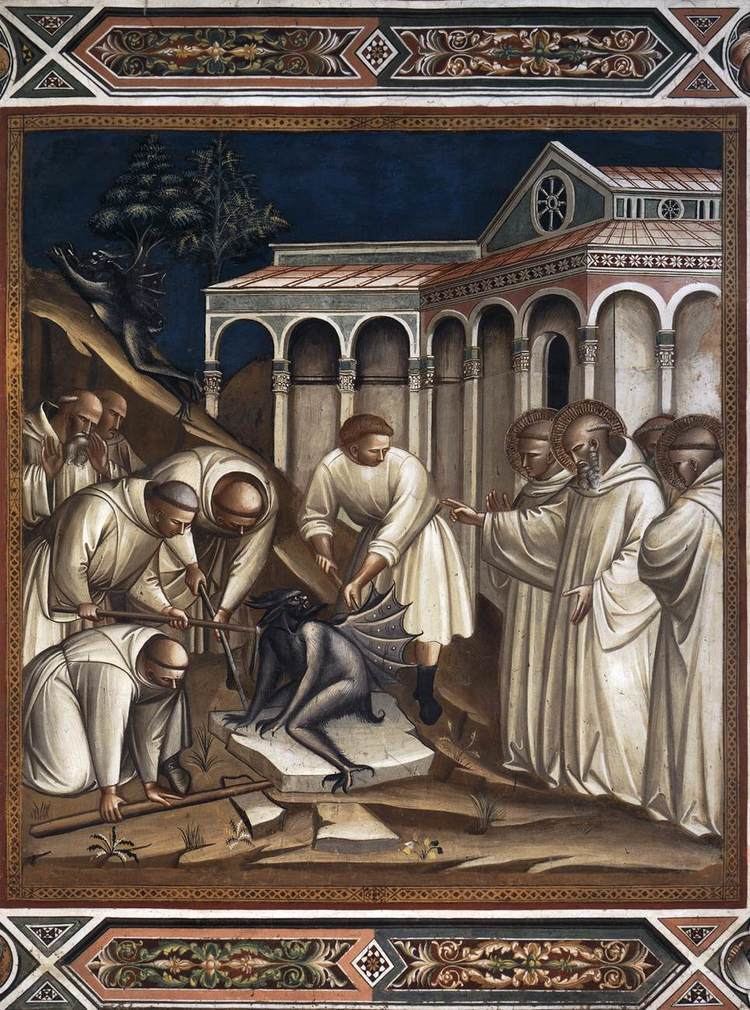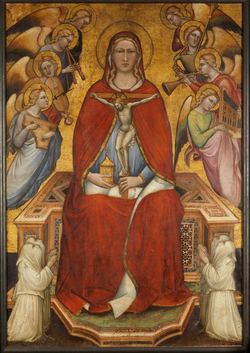Name Spinello Aretino | Children Parri Spinelli | |
 | ||
Artwork Virgin and Child with a Goldfinch | ||
Spinello aretino nisi dominus p salm 127
Spinello Aretino (c. 1350 – c. 1410) was an Italian painter from Arezzo, whose style influenced the development of late 14th- and early 15th-century painting in Tuscany.
Contents
- Spinello aretino nisi dominus p salm 127
- Siena palazzo pubblico spinello aretino restauro delle pitture murali architetto piezzo
- Life
- Assessment
- References

Siena palazzo pubblico spinello aretino restauro delle pitture murali architetto piezzo
Life

Spinello Aretino was the son of a Florentine named Luca, who had taken refuge in Arezzo in 1310 when the rest of the Ghibelline party was exiled from Florence. His family name 'Aretino' means 'from Arezzo'.

In the past it was believed that Spinello was a pupil of Jacopo del Casentino, a follower of Giotto. However, this is no longer accepted by art historians. Spinello's style was a sort of link between the school of Giotto and that of Siena. In the early part of his life he worked in Florence as an assistant to his master Jacopo while painting frescoes in the church of the Carmine and in Santa Maria Novella. Between 1360 and 1384 he was occupied in painting many frescoes in and near Arezzo, almost all of which have now perished.

After the sack of Arezzo in 1384 Spinello returned to Florence, and in 1387-1388 with some assistants covered the walls and vault of the sacristy of San Miniato of Florence with a series of frescoes, the chief of which represent scenes from the life of Saint Benedict. These still exist, though in a sadly restored condition; they are very Giotto-like in composition, but have some of the Siena decorative brilliance of color.
In 1391-1392 Spinello was painting six frescoes, which still remain on the south wall of the Pisan Campo Santo, representing miracles of St. Potitus and St. Ephesus. For these he received 270 gold florins. Among his later works the chief are the very fine series of frescoes painted in 1407-1408 on the walls and vault of a chapel in the municipal buildings of Siena; these also have suffered much from repainting, but still are the finest of Spinello's existing frescoes. Frescoes in Sala di Balia of the Palazzo Pubblico represent the war of Frederick Barbarossa against the Pope Alexander III. Spinello died at Arezzo about 1410.
Assessment
Spinello's frescoes are all strong and highly decorative works, drawn with much spirit, and are very superior in style to his panel pictures, many of which appear to be mere bottega productions. The academy of Florence possesses a panel of the Madonna and Saints, which is chiefly interesting for its signature Hoc opus pinxit Spinellus Luce Aritio D.I.A. (1391). The easel pictures which are to be found in the various galleries of Europe give little or no notion of Spinello's power as a painter.
